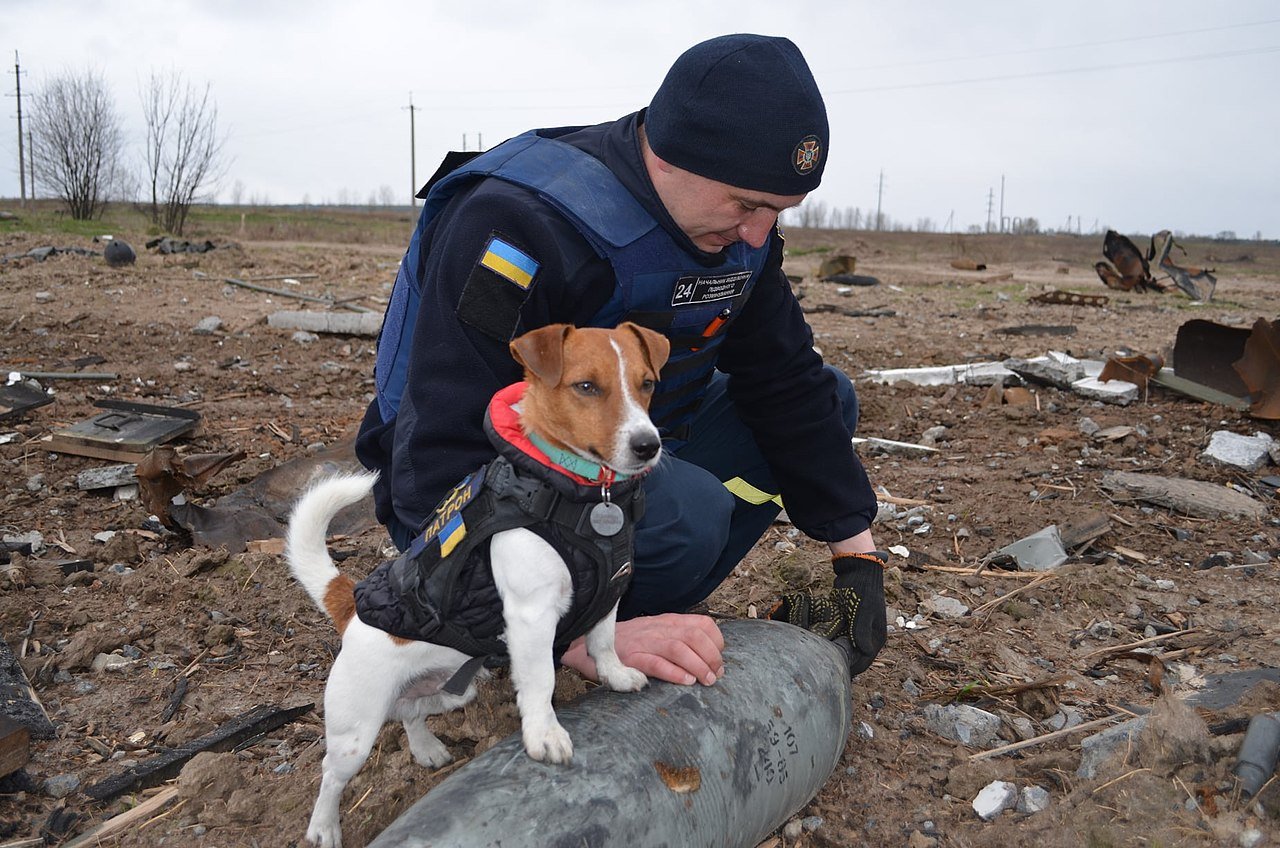Right Under the E-Nose: The Emergence of Biomimetic Olfactory Chips
New research into sensors that mimic the olfactory system of humans and animals may lead to new possibilities across applications, including advanced robotics and safer chemical handling and threat detection in process control.
Dogs have been used to detect chemical compounds, drugs, weapons, and human scents for generations. It's a well-known, documented fact that their olfactory glands, or sense of smell, are much more sensitive than those found in humans. Recently, researchers at the Hong Kong University of Science and Technology (HKUST) created semiconductor chips that mimic the olfactory sensing capability of humans and animals. These biomimetic olfactory chips (BOCs) could be used to distinguish between chemical threats, as well as detect medical conditions that may otherwise be untraceable without more invasive medical testing.
A little hero uses his sense of smell to look for land mines. Image used courtesy of Wikimedia Commons
From Lore to Reality
Ask any pet owner if their animal can detect changes in their mood or health. Most of them will tell you their pet can sense all sorts of things that other humans cannot. Take, for instance, the "grim kitty" who comforted over 100 nursing home patients in their last hours. Whether or not animals can sense specific things is up for debate, but if such a mechanism is in place, perhaps it is linked to olfaction.
Ultimately, this is what researchers at HKUST are working towards developing: an "e-nose" that mimics the olfactory system of humans and animals. Unlike animals, which have limited capabilities in alerting humans about what they smell, e-noses can be integrated with software to distinguish and identify many different substances. According to Fan Zhiyong, a HKUST professor leading the study, "It [BOCs] can [in the near future] also monitor the abnormalities in volatile organic molecules in our breath and emitted by our skin, to warn us on potential diseases, reaching further potential of biomimetic engineering.”
A look at human olfaction and BOC functioning (click to enlarge). Image used courtesy of The Hong Kong University of Science and Technology
Chemical Threats and Detection
Besides medical purposes, these e-noses could be used in industrial settings to detect chemical process emissions before they become a threat. While some monitoring is already performed, the ability to distinguish between different hazards is of great importance. Plenty of industrial and chemical processes emit harmful aerosols or fumes, and with proper identification, sources and causes of leaks could be quickly identified and minimize exposure to plant workers.
Some chemicals, like hydrogen sulfide, can be detected at low, relatively safe concentrations but become undetectable at high concentrations, where they are deadly. While current air monitoring standards prevent many deaths, hydrogen sulfide deaths still occur. Furthermore, plenty of asphyxiants, such as nitrogen, are not in themselves hazardous except that they can displace breathable air. Rather than simply monitoring oxygen content and using that as a warning system, an "e-nose" might be able to distinguish whether the low oxygen content in a room is due to nitrogen or hydrogen, and the emergency response can be better geared towards the threat.
A robot dog uses HKUST’s BOC to identify items in boxes based on odor (click to enlarge). Image used courtesy of The Hong Kong University of Science and Technology
The Future in BOCs
The development of BOCs will continue to emerge. While dogs have been used to sniff out drugs, weapons, explosives residue, and other substances, they require a significant investment in time and training. Furthermore, they are often in harm's way in these detection duties. Security of the future may involve e-noses as a safer, quicker, and more precise mechanism for detecting threats.









